British protectorate
British protectorates were territories over which the British government exercised only limited jurisdiction. Many territories which became British protectorates already had local rulers with whom the Crown negotiated through treaty, acknowledging their status whilst simultaneously offering protection. British protectorates were therefore governed by indirect rule. In most cases, the local ruler, as well as the subjects of the ruler, were not British subjects. British protected states represented a more loose form of British suzerainty, where the local rulers retained absolute control over the states' internal affairs and the British exercised control over defence and foreign affairs.[1]
Implementation
When the British took over Cephalonia in 1809, they proclaimed, "We present ourselves to you, Inhabitants of Cephalonia, not as invaders, with views of conquest, but as allies who hold forth to you the advantages of British protection." When the British continued to occupy the Ionian Islands after the Napoleonic wars, they did not formally annex the islands but described them as a protectorate. The islands were constituted by the Treaty of Paris in 1815 as the independent United States of the Ionian Islands under British protection. Similarly, Malta was a British protectorate between the capitulation of the French in 1800 and the Treaty of Paris of 1814.
The princely states of India was another example of how indirect rule was used during the time of Empire.[2] So too were many of the West African holdings.[3]
Other British protectorates followed. In the Pacific Ocean the sixteen islands of the Gilberts (now Kiribati) were declared a British Protectorate by Captain Davis R.N., of HMS Royalist between 27 May and 17 June 1892. The Royalist also visited each of the Ellice Islands, and Captain Davis was requested by islanders to raise the British flag, but he did not have instructions to declare the Ellice Islands as a protectorate.[4] The nine islands of the Ellice Group (now Tuvalu) were declared a British Protectorate by Captain Gibson R.N., of HMS Curacoa, between 9 and 16 October of the same year.[5] Britain defined its area of interest in the Solomon Islands in June 1893, when Captain Gibson R.N., of HMS Curacoa, declared the southern Solomon Islands as a British Protectorate with the proclamation of the British Solomon Islands Protectorate.[6]
In 1894, Prime Minister William Ewart Gladstone's government officially announced that Uganda, where Muslim and Christian strife had attracted international attention, was to become a British Protectorate. The British administration installed carefully selected local kings under a program of indirect rule through the local oligarchy, creating a network of British-controlled civil service. Most British protectorates were overseen by a Commissioner or a High Commissioner, rather than a Governor.
British law makes a distinction between a protectorate and a protected state. Constitutionally the two are of similar status, in which Britain provides controlled defence and external relations. However, a protectorate has an internal government established, while a protected state establishes a form of local internal self-government based on the already existing one.
Persons connected with a former British protectorate, protected state, mandated territory or trust territory may remain British Protected Persons if they did not acquire the nationality of the country at independence.
The last British protectorate proper was the British Solomon Islands, now Solomon Islands, which gained independence in 1978; the last British protected state was Brunei, which gained full independence in 1984.
List of former British protectorates
Americas
.svg.png)

Arab world
.svg.png)
- Eastern Protectorate States (mostly in Haudhramaut); later the Protectorate of South Arabia (1963–1967)
- Western Protectorate States; later the Federation of South Arabia (1959/1962-1967), including Aden Colony





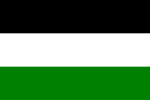









.svg.png)

.svg.png)
Asia
.svg.png)
.svg.png)
.svg.png)
.svg.png)
Europe
.svg.png)

.svg.png)

Sub-Saharan Africa
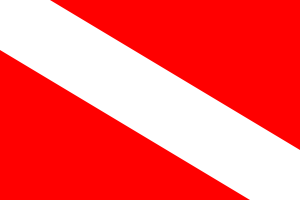

.svg.png)
.svg.png)
.svg.png)
.svg.png)
.svg.png)
.svg.png)

.svg.png)

.gif)
.svg.png)

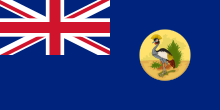

.svg.png)
*protectorates which existed alongside a colony of the same name
East Africa
.svg.png)
Oceania

.svg.png)

.svg.png)


List of former British protected states
As protected states, the following states were never officially part of the British Empire and retained near-total control over internal affairs; however, the British controlled their foreign policy. Their status was rarely advertised while it was in effect, it becoming clear only after it was lifted.[1]

.svg.png)
.svg.png)
.svg.png)

.svg.png)

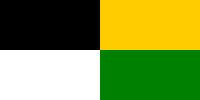



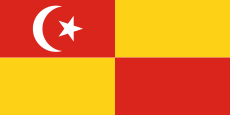


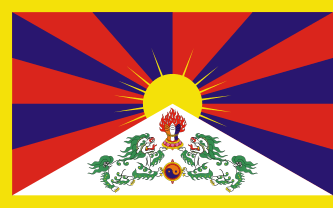
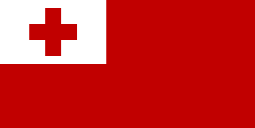

.svg.png)

.svg.png)
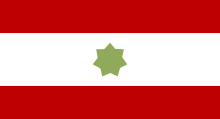

References
- Onley, The Raj Reconsidered (2009), pp. 50–51.
- Lakshmi Iyer, "Direct versus indirect colonial rule in India: Long-term consequences." The Review of Economics and Statistics (2010) 92#4 pp. 693-713 online Archived 2014-09-03 at the Wayback Machine
- Adiele Eberechukwu Afigbo, The Warrant Chiefs: indirect rule in southeastern Nigeria, 1891-1929 (London: Longman, 1972)
- Resture, Jane. "TUVALU HISTORY – 'The Davis Diaries' (H.M.S. Royalist, 1892 visit to Ellice Islands under Captain Davis)". Janeresture.com. Retrieved 20 September 2011.
- Noatia P. Teo, Hugh Larcy (ed) (1983). "Chapter 17, Colonial Rule". Tuvalu: A History. University of the South Pacific/Government of Tuvalu. pp. 127–139.CS1 maint: extra text: authors list (link)
- Commonwealth and Colonial Law by Kenneth Roberts-Wray, London, Stevens, 1966. P. 897
- Cunningham, Joseph Davy (1849). A History of the Sikhs: From the Origin of the Nation to the Battles of the Sutlej. John Murray.
- Meyer, William Stevenson (1908). "Ferozepur district". The Imperial Gazetteer of India. XII. p. 90.
But the British Government, established at Delhi since 1803, interevened with an offer of protection to all the CIS-SUTLEJ STATES; and Dhanna Singh gladly availed himself of the promised aid, being one of the first chieftains to accept British protection and control.
- Onley, The Raj Reconsidered (2009), p. 50.
- "Histories of the Modern Middle East". Laits.utexas.edu. Retrieved 21 April 2019.
- "Timeline – Story of Independence".
- "Info" (PDF). himalaya.socanth.cam.ac.uk. Retrieved 2020-04-20.
- Christie, Clive (October 1976). "Great Britain, China and the Status of Tibet, 1914–21". Modern Asian Studies. 10 (4): 481–508. doi:10.1017/S0026749X0001492X. ISSN 1469-8099.
Bibliography
- Onley, James (March 2009), "The Raj Reconsidered: British India's Informal Empire and Spheres of Influence in Asia and Africa" (PDF), Asian Affairs, 11 (1)